Table of Contents
Day time or night time, a gardening lover would never miss out on its one and only love. You may be well aware of the fact that usually for plantation you need lots of water and a good moist soil with excellent climatic conditions. However, what do we do we actually do when it comes to desert gardening? Wait, by the name of it does this mean planting flowers in a dry place? Do cacti come to your mind when we say desert? There must be several confusions regarding this kind of gardening inside your mind.
Do you by any chance remember the winter gardening? Yes, the same gardening where you plant your flowers to bloom in the freezing snow. Hence, there are some ideas there too for an arid climate. Let us get some more insights on the desert land and how we can actually make our plants grow there!
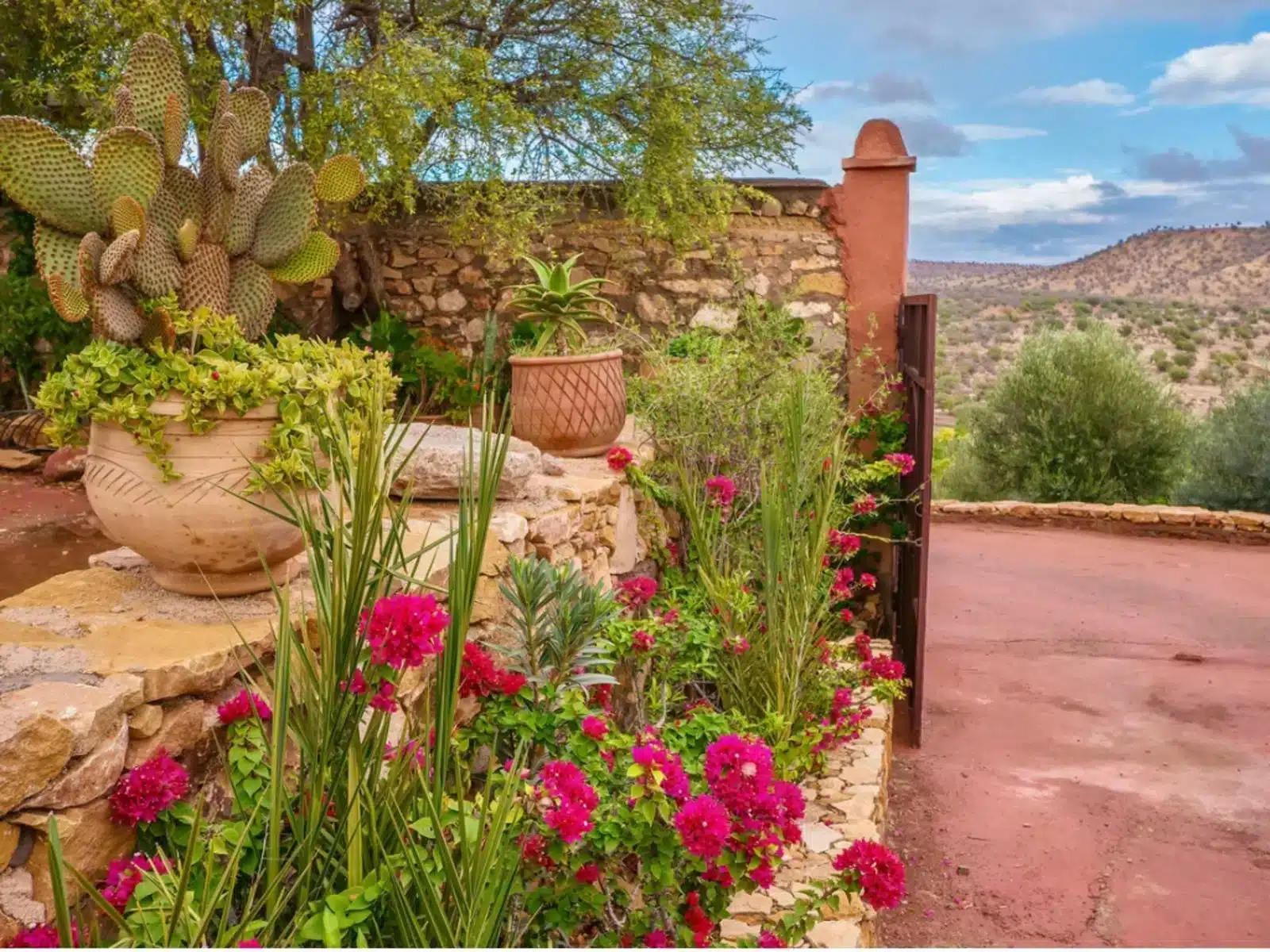
Desert Gardening
Imagine a beautiful day out in the backyard of your home space. And you’re sitting in your terrace arranging some wonderful flower ideas on the steps of your terrace, planning the layout and everything, that must definitely be a therapeutic experience. To flourish in arid climates, desert gardening calls for careful planning and well-chosen plants. Create unique, low-maintenance gardens using drought-tolerant and temperature-hardy plants. Retain moisture and shield your plants using hardscaping, gravel planting beds, and shade cloths. Further improving the effectiveness of your garden are raised beds and drip watering systems. For desert gardeners, cooperative expansions and landscape design services provide priceless resources. Notwithstanding the difficulties, desert gardens are aesthetically distinctive with their calm beauty and unusual flora, which justifies the work. Just like your desert wind gardens afh, your plants need the same kind of nursing.
Before we head onto these 7 brilliant ideas, let us first consider some crucial point not to miss out on for a desert dry gardening!
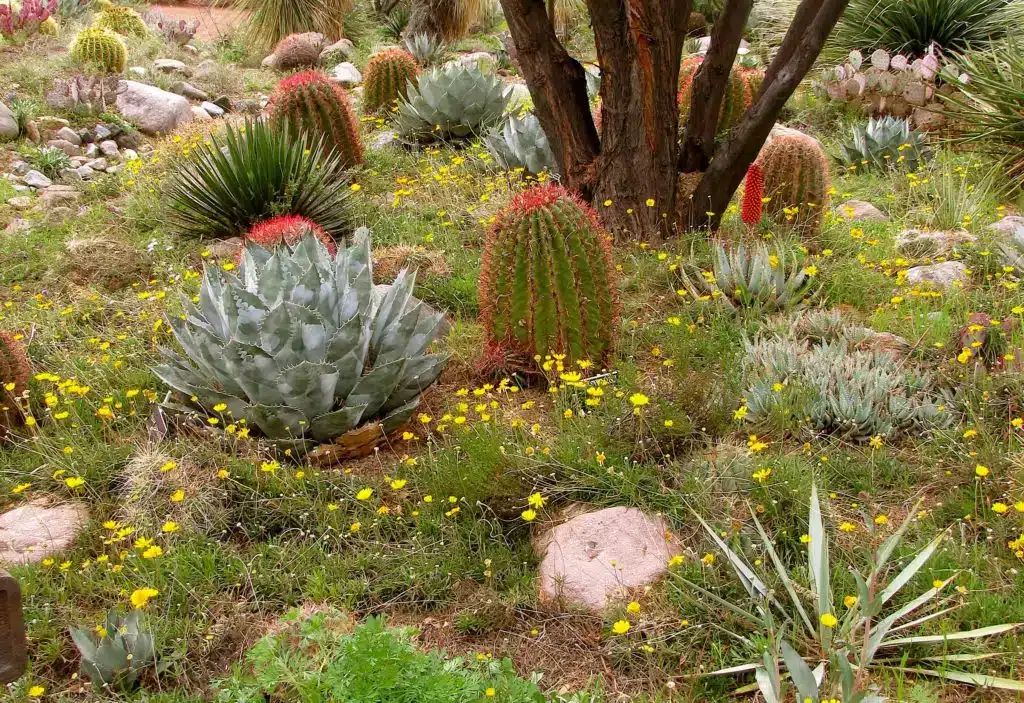
Some Considerations Before You Jump into Desert Gardening
Though the principles still apply, desert gardening calls for particular considerations. We need to consider these things;
- Know Your Hardiness Zones
Recognize the extremes of temperature and climate your location experiences.
- Study Your Soil
Learn about the makeup of your soil and how it influences plant development. - View Sun and Wind Patterns
Invest some time learning where the breezes are most vital and where the light falls.
- Get Ready for Extreme Temperatures
Schedule cold evenings and sweltering days.
- Create Cozy Spaces
Create cozy areas by considering fire pits for cooler evenings and shadow pergolas for sunny days.
Therefore, knowing these elements will enable you to decide which plants and accents would be best for your desert garden.
7 Landscaping Desert Gardening Ideas
Finally let us take a view at 7 of these enchanting gardening ideas for a deserted space!
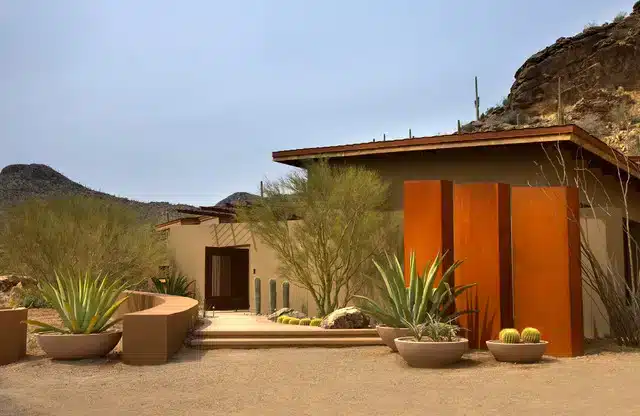
1. Embrace Desert Palettes
With their subdued and vivid colors, desert gardens present particular attractiveness. Apply a desert palette to your garden to;
- Working with sandy tones and warm terra cotta.
- Including cold blues, grays, greens, and purples derived from cactus and succulents.
- Adding striking red or yellow highlights to draw the eye.
- Vibrant color spots using cobalt-blue glazed pots.
Hence, together, these components produce an arresting, coherent desert garden.
2. Understanding the Difference Between Cacti & Succulent
Both cactus and succulents shine in arid conditions, although they differ in several ways.
- Store water in their leaves and stems so they may survive for extended periods without it.
- They might have leaves and range in form and size.
- Cacti are a particular kind of succulent identified by their hairs and areoles, cushiony growths. Therefore, they are suited to great dryness and lack typical leaves.
- Though all cacti are succulents, not all succulents are cacti.
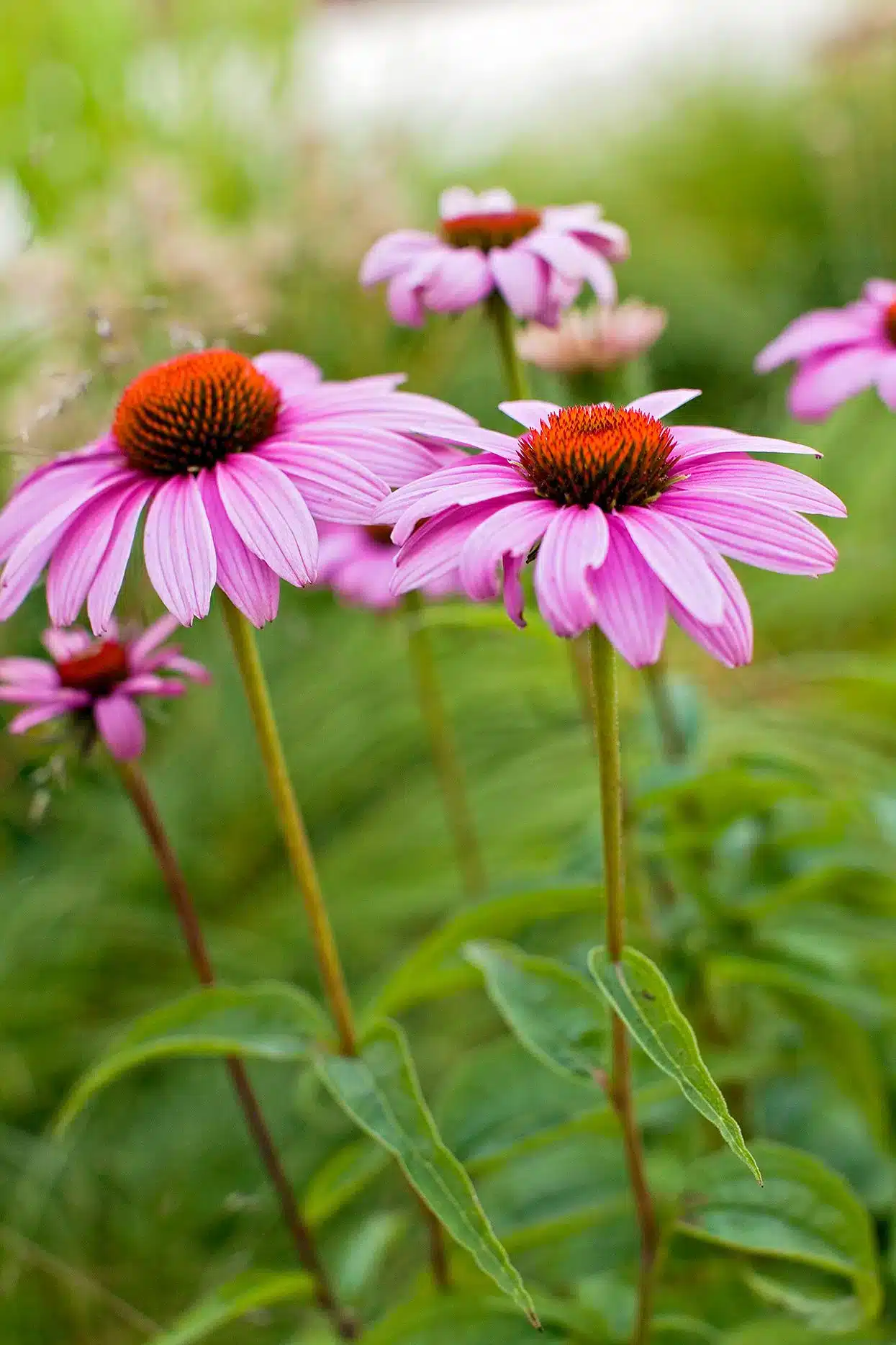
3. Picking Drought Tolerant Flowering Perennials
Use these drought-tolerant blooming perennials for a vibrant desert garden;
- Likes dry weather and creates unique purple blossoms.
- Offer several forms and hues with little water demand.
- Agastache has scented blossoms used to draw pollinators.
These vigorous plants demand little care and not only survive in dry conditions. Hence, add them to guarantee a vivid, low-water garden that withstands arid conditions.
4. Create Containers
For sandy, dry, or rocky desert soil, container gardening offers versatility for imaginative designs.
- Terra cotta pots create a warm, earthy effect by blending naturally occurring hues of succulents.
- Glazed ceramic pots provide improved water saving and a range of hues.
- Clay pots are a better option for constant soil temperature since metal pots can hold either too much heat or cold.
Water plants should be planted in the late afternoon to save water and increase vitality.

5. Incorporate Dry Stream Beds
Dry stream beds are one efficient way to control runoff and save water. In naturally existing slopes or gullies, they perform nicely. Beyond their practical value, these elements accentuate scenery. To make the most use of dry creek beds;
- Prevent Runoff
Direct and steady water flow helps to prevent runoff. - Improve Aesthetics
Add natural appeal and visual intrigue.
- Conserve Water
Save water by encouraging soil absorption and lowering erosion.
6. Plant Agaves for Desert Gardening
Plant agaves to transform your arid garden. Their big, meaty, blue leaves create dramatic texture and visual appeal. Agaves give a classic, timeless appeal for dry settings with their silvery and mild blue tones. These succulents flourish in demanding environments, are extremely hot and drought-tolerant plants, and provide a little flair.
- Big, thick leaves
- Warm and drought-resistant
- Standard desert hues

7. Add Color with Native Wildflowers
Lastly, bright native wildflowers will accentuate your desert garden;
- It features brilliant crimson, lacy sprays of flowers lasting weeks, and a coral plant (fountain bush/firecracker plant).
- Bright yellow blooms perfect for the desert heat are Mexican Gold Poppies.
- It offers a vivid pink or orange blossoms, the desert mallow.
- Desert Rose gives your scene rich, exotic hues.
Hence, invest in seeds from specialist suppliers to guarantee a vibrant, healthy garden.
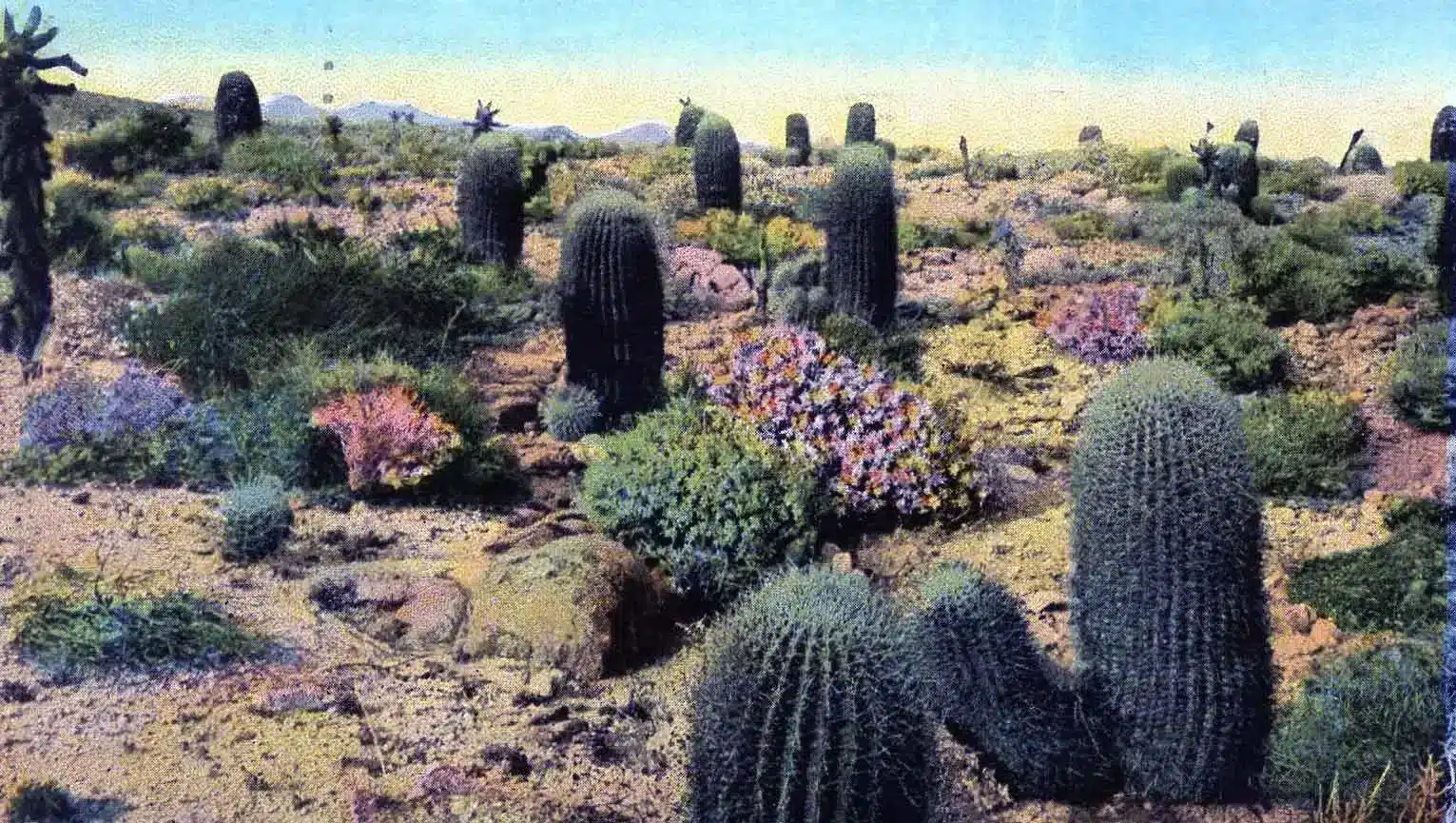
Final Thoughts
Coming to an end, desert gardening creates a vivid, low-maintenance refuge from your surroundings. Accept desert hues and know the variations between succulents and cacti. Select drought-tolerant flowering perennials and design pots to accentuate differences. Dry stream garden beds and plant agaves should be provided for the structure. To grab the eye, add natural wildflowers. Desert gardening requires particular thought on shade cloths, drip irrigation, and moisture retention. These tips for desert gardening will help you develop beautiful, carefree desert gardens. From raised beds to ground cover, high desert plants gardening employs distinctive landscaping ideas, including vegetable gardening. Hence, see a cooperative extension or visit a hi-desert plant nursery on Easy Street for extra guidance.
In conclusion, continue desert gardening and see how wonderful your yard turns out. Have fun planting your beautiful thorny cacti!
